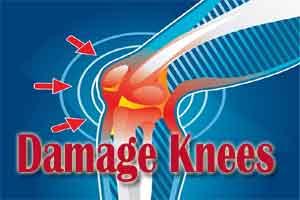- Home
- Editorial
- News
- Practice Guidelines
- Anesthesiology Guidelines
- Cancer Guidelines
- Cardiac Sciences Guidelines
- Critical Care Guidelines
- Dentistry Guidelines
- Dermatology Guidelines
- Diabetes and Endo Guidelines
- Diagnostics Guidelines
- ENT Guidelines
- Featured Practice Guidelines
- Gastroenterology Guidelines
- Geriatrics Guidelines
- Medicine Guidelines
- Nephrology Guidelines
- Neurosciences Guidelines
- Obs and Gynae Guidelines
- Ophthalmology Guidelines
- Orthopaedics Guidelines
- Paediatrics Guidelines
- Psychiatry Guidelines
- Pulmonology Guidelines
- Radiology Guidelines
- Surgery Guidelines
- Urology Guidelines
Most meniscal tears of knee require physical therapy not surgery

A new study reiterates that most meniscal tears may just require physical therapy and not surgery.
No significant difference in outcomes was found between meniscectomy and a sham procedure among patients with knee pain and meniscal tears without osteoarthritis suggesting physical therapy(PT) to remain the initial treatment for such patients, reports a study published in the journal JAMA Network.
Meniscal tears may occur as part of a degenerative process of the knee joint and occur in up to 60% of persons older than 50 years of age without knee pain Arthroscopic partial meniscectomy (APM) is among the most frequently performed procedures in orthopedic surgery.
Victor A and associates conducted a randomized clinical trial assessing whether PT is noninferior to arthroscopic partial meniscectomy (APM) for improving patient-reported knee function in patients with meniscal tears.
Read Also: Exercise as effective as surgery for middle aged patients with knee damage
The trial included 321 patients aged between 45-60 years.The patients were randomly assigned to APM (n = 159) or a predefined PT protocol (n = 162). The primary outcome was changed in patient-reported knee function.
Key study findings:
- In the PT group, 47 participants (29%) had APM during the 24-month follow-up period, and 8 participants randomized to APM (5%) did not have APM.
- Over a 24-month follow-up period, knee function improved in the APM group by 26.2 points (from 44.8 to 71.5) and in the PT group by 20.4 points (from 46.5 to 67.7).
- Adverse events occurred in 18 participants in the APM group and 12 in the PT group.
- Repeat surgery (3 in the APM group and 1 in the PT group) and additional outpatient visits for knee pain (6 in the APM group and 2 in the PT group) were the most frequent adverse events.
Although noninferiority was demonstrated for the overall between-group difference in patient-reported knee function, and for the 3- and 6-month follow-up time points, results did not demonstrate noninferiority at the 12- and 24-month time points.
The authors suggest that Longer follow-up will provide more details on the effect of time on the between-group differences.
The study concluded that, in patients older than 45 years with knee pain and nonobstructive meniscal tears, PT was noninferior to APM for knee function over a 24-month follow-up period. The results of this trial support the recommendations from the current guidelines that PT may be considered an appropriate alternative to APM as first-line therapy for patients with meniscal tears.
For reference log on to 10.1001/jama.2018.13308

Disclaimer: This site is primarily intended for healthcare professionals. Any content/information on this website does not replace the advice of medical and/or health professionals and should not be construed as medical/diagnostic advice/endorsement or prescription. Use of this site is subject to our terms of use, privacy policy, advertisement policy. © 2020 Minerva Medical Treatment Pvt Ltd